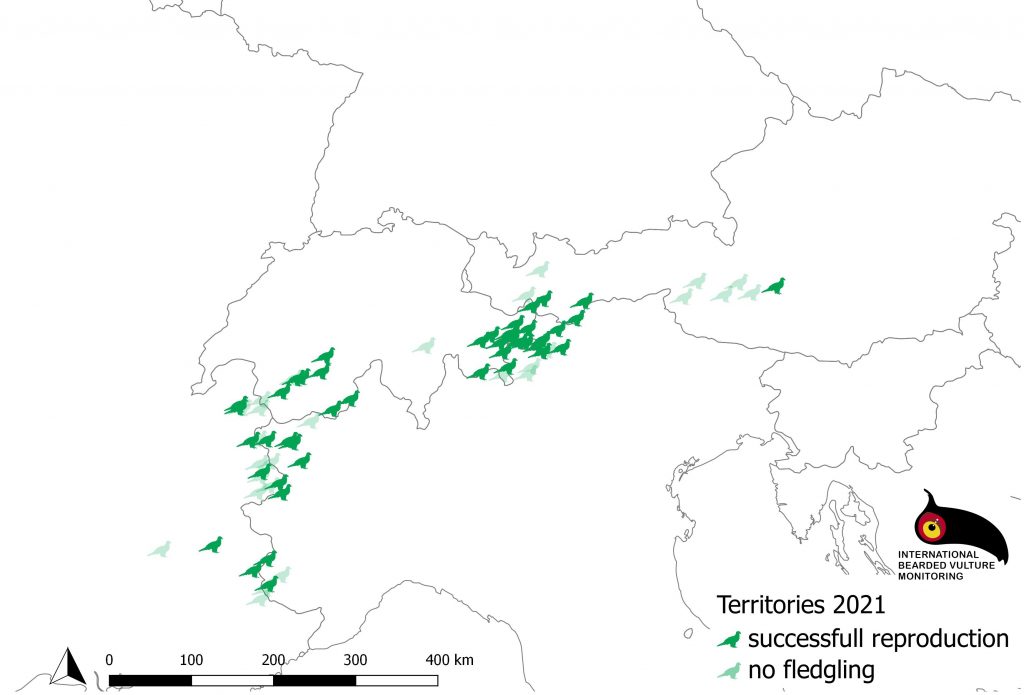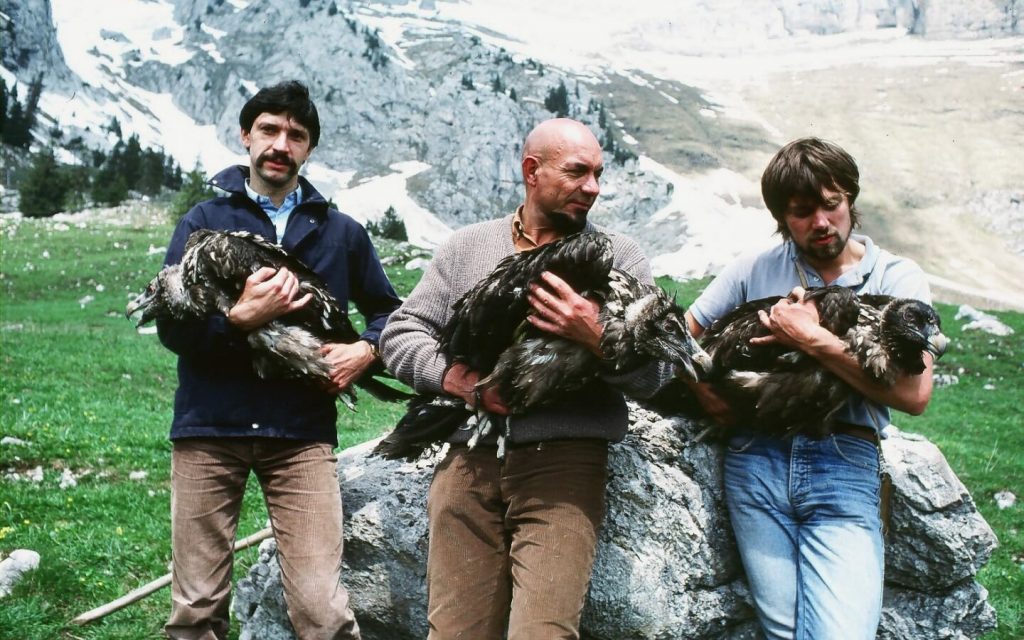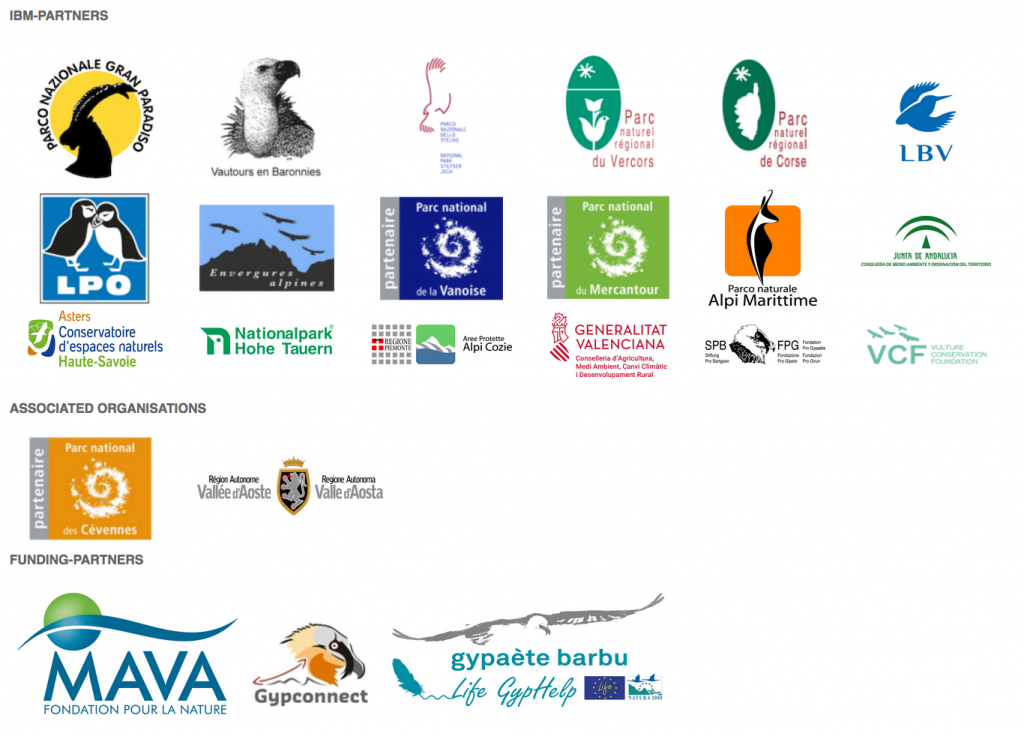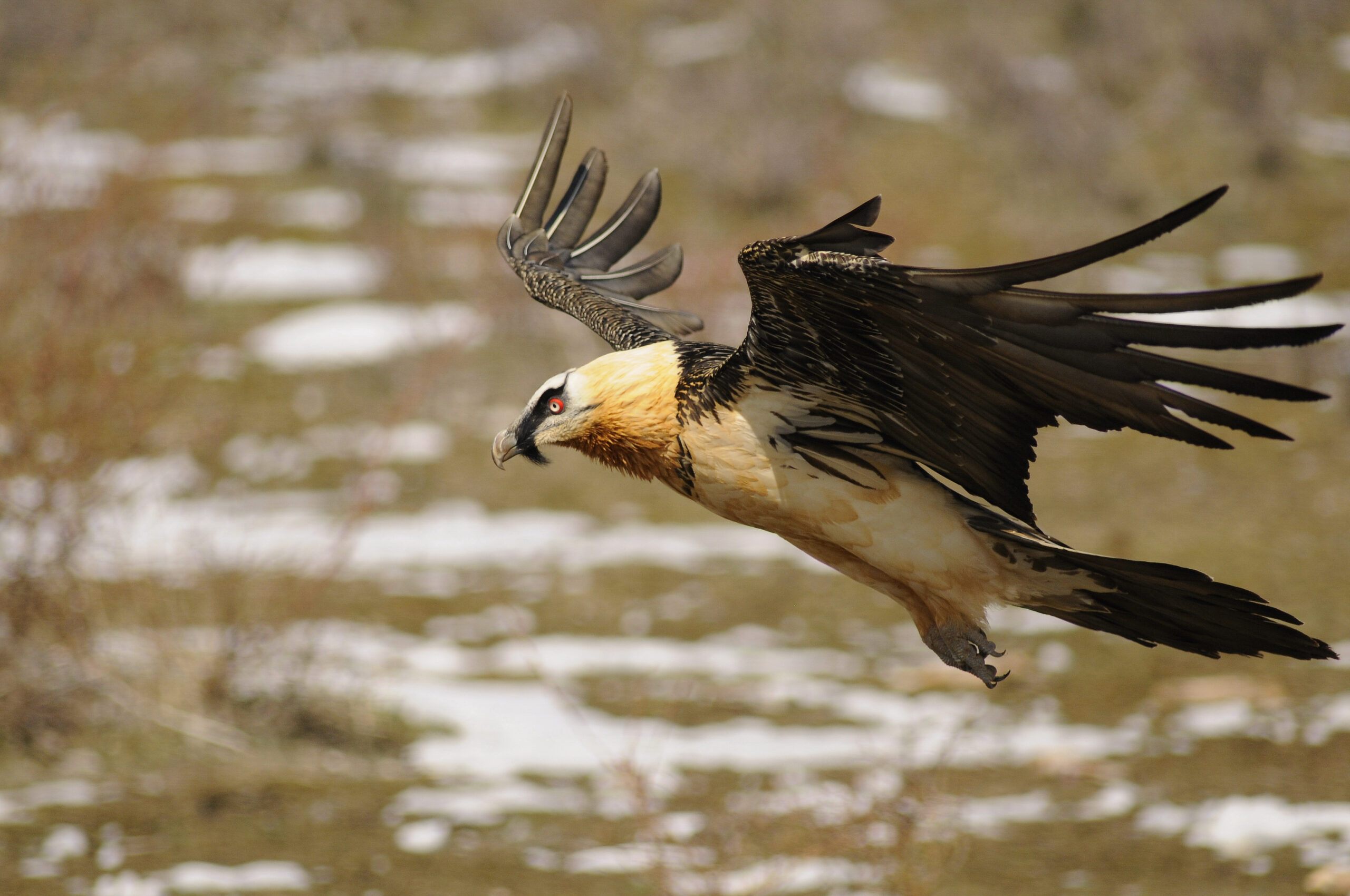
Bearded Vultures in the Alps have been extra busy this breeding season. These birds, known to be devoted parents, braved blizzards, snow and cold temperatures for around 8 to 9 months while conducting their parental duties, which, among other responsibilities, involved building nests, incubating eggs and rearing chicks. Thanks to their diligent efforts, they have once again broken a record, producing the highest-ever known number of fledglings. This brilliant news comes to show that Bearded Vulture numbers continue to increase in the Alps, reinforcing the success of the reintroduction project.
New record of Bearded Vulture fledglings in the Alps

In the Alpine chain, local partners monitor the species’ reproduction progress in the field from a safe distance and report it to the International Bearded Vulture Monitoring Network (IBM), coordinated by the Vulture Conservation Foundation (VCF). In this year’s breeding season, 61 territories have been reported to the IBM-network, with 53 chicks hatching. This year, a record number of 44 fledglings took off for their first flight, 7 more fledglings than in 2020. Switzerland alone welcomed almost half (21) of these fledglings! Furthermore, across all territories, 17 breeding failures have been reported, eight of them after the hatching of the young bird. In one territory (Ötztal in Austria) with successful reproduction, no breeding has been observed in previous years.
Bearded Vulture breeding behaviour in the wild
The reproduction of Bearded Vultures is a slow and challenging process. It takes up to 5 to 7 years for birds to reach sexual maturity, but breeding success usually occurs from 8 years old onwards. Pairs in the wild typically lay 1-2 eggs, but if both hatch, only the older and stronger chick survives due to evolutionary cainism. Therefore, a breeding pair or sometimes trio can only raise one young bird every year.
Bearded Vultures are the earliest breeders of the four European vulture species. Bearded Vultures in the Alps usually start to lay eggs in late December and continue up until February, with parents sharing brooding responsibilities until the chick hatches after an average of 54 days. This special breeding period is related to the diet of the chicks, which cannot digest bone, so the species has evolved to hatch towards the end of winter when there is potentially a plentiful supply of food. This includes animals that died from avalanches and are then exposed to the thawing snow or animals that die towards the end of the season from not surviving harsh conditions, leaving plenty of animal carcasses for the parents to feed their chicks.
Bearded Vultures in the Alps – a successful reintroduction project

The species was driven to extinction in the Alps during the 20th Century, and to bring them back, pioneers from all Alpine countries initiated the reintroduction project in the 1970s. The first birds were released in 1986 at Hohe Tauern National Park (Austria), and in 1997 the first breeding pair successfully raised a chick in the wild in France.
Today, there are between 250 and 300 Bearded Vultures, including 61 breeding pairs, across the Alps. The VCF currently coordinates the reintroduction project and continues to release captive-bred Bearded Vultures into the region to increase the genetic diversity and promote the geographical expansion of the species towards the east, which led to the first releases in the Bavarian Alps in Germany this year. Its success sparked the imagination and gathered the support of many stakeholders across the Alpine chain and is considered one of the best wildlife comeback stories of all time!
International Bearded Vulture Monitoring Network (IBM)

The International Bearded Vulture Monitoring Network (IBM) is a unique international collaboration led by the Vulture Conservation Foundation between national & natural parks and non-governmental organizations to coordinate the monitoring activities for European Bearded Vulture populations. Through this network, data about the Bearded Vulture in Europe is collected, shared and made available to everyone working for the conservation of the species. The IBM-network also uses this data and comes together to discuss conservation strategies and priorities for this species on an international level. There are currently 18 partners and two associated organizations part of the IBM-network.
If you have any Bearded Vulture observations and photographs in the Alps, please report them here.




